| Persian
Drum |
| |
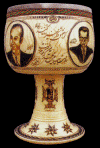 |
Wood
Burning
to |
| |
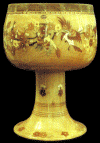 |
| Moaragh
Artwork
|
| |
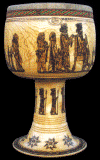 |
Wood
Burning
to |
| |
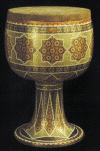 |
| Inlaid
Artwork |
| |
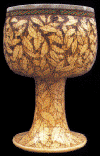 |
Wood
Burning
to |
| |
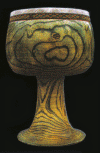 |
Natural texture
|
| |
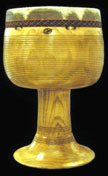 |
Hamnavazi
Tunable Tombak |
| |
| |
|
|
|
|
|
|
|
|
|
"
Tombak
:
is
a single-headed drum worked and chiseled from a piece of
mulberry wood. A wet skin is stretched over the large end
and glued with a string wound several times around the rim
to hold the
head while it dries.
The instrument is played with the fingers of both hands. The
right hand is used for deep sounds in the center and also
high sounds near the rim, while the left hand concentrates
on high sounds and snaps. A roll is produced by throwing the
limp fingers of each hand alternately against the head.
Other special techniques are employed to obtain various
sounds such as snapping the third and fourth fingers against
the skin near the rim, or depressing the skin to raise the
pitch."
|
|
T
|
|
Music
and Song in Persia by
Lloyd Miller
|
|
" The Tombak . Performances of Persian art music
now use the tombak (also dombak) or zarb
as the chief percussion instrument. This is a small
one-faced drum whose upper half is wider than the lower.
Carved of a single block of wood, its body is hollow, open
at the lower end and covered with a sheepskin membrane at
the upper. Because this membrane is glued firmly onto the
frame, gross differences in tuning cannot be
obtained..."
" Persian drummers, who have developed an
elaborate technique, are able to produce a great variety of
different sounds on the single face. For example, the thick,
dull sound, Tom, comes from striking the center of
the face with the whole hand; the sharp, dry sound, Bak,
is produced by striking the face near the rim..."
|
|
T
|
|
Classical Persian
Music by Ella Zonis
|
|
|
" ...The Tombak
does not simply serve the function of a metronome. The
melodic beat of the drum is usually woven into the music
like any other instrument. At times, a Tombak player will
adhere strictly to a set of notations, but in other
instances he/she will improvise..."
|
|
T
|
|
Wikipedia.org
|
|
|
|
|
Basic
Strokes of Tombak
|
|
by Matt
Hannafin © 2002
|
|
T
|
|
" The Tombak (also called zarb) is the principle percussion
instrument of Persian classical music. Its technique
involves innumerable strokes and techniques employing all
the fingers of both hands, alone and in combination.
Strokes
on the Tombak and strokes on the Doumbek
(Arabic/Turkish-style goblet drum) are related, but they're
very, very different..." more
@ drumdojo.com
|
|
|
|
|
|
T
|
|
T
|
 T T
|
|
Video
SampleT
Tombak player :Pedram
Khavar zamini |
|
T
|
|
|
|
|
|
|
Excerpts from "The Healing
Power of the Drum" |
|
"In the medical field,
the hand drum is being used to help
Alzheimer's patients improve their short-term memory and
increase social interaction and to help autistic children
increase their attention spans."
" I have personally witnessed the
power of the drum to relax the tense,
energize the tired,
and heal the
emotionally wounded. I have also observed the hand drum's
extraordinary and consistent ability to create states of
euphoria,
induce light trance,
promote play,
release anger and promote feelings of
community and unity. "
"When people drum,
they are generally having fun. It is
difficult to be in a playful mode and be stressed at the
same time. Also,
the drum has the capacity to release
negative feelings-of which stress is clearly one. When one
hits the drum,
he or she is placed squarely in the
here and now..."
"The drum touches that part of us that
knows nothing of cell phones,
faxes and deadlines. This part of us
to which the drum speaks knows only inner peace,
self-expression,
and that which is our very basic life
force. Drumming creates an island in time,
where all else is shut out except the
rhythms that issue forth from your fingertips at your pace,
expressing your feelings at that
present moment.
Is it any wonder our souls hunger for
it? The only wonder is that a need so vital could be
supplied by a vehicle so simple,
The DRUM."
more @
amazon.com
|
|
|
|
|
TO
|
|
More About
Persian Music
|
|
|
Historical
Overview of Persian Music
|
|
|
Periods
in Persian History
|
|
|
Books,
Articles and Links |
|
|
|
|
|
|
|
|
|
|
|
|
|
|
|
|
News &
Press releases |
| |
| |
Research
shows
that
music
study helps
develop
critical thinking
and
self-discipline. It improves
cognitive development, math and reading abilities,
self-esteem, SAT
scores, spatial reasoning
skills, and school
attendance. Music students
are more likely to
graduate from high
school and
attend college, and less
likely to
be involved with gangs and
substance abuse.
But music programs
in
public schools are
declining.
Learn more |
| |
|
|
To |
|
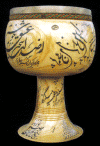 |
|
Calligraphy
to |
|
To |
|
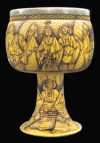 |
|
Embossing Artwork
to |
|
To |
|
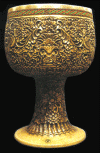 |
|
Wood Carving (Monabat)
to |
|
Tombak maker |
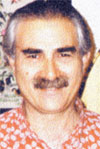
|
Fereidoun Helmi
to
|
|
Design |
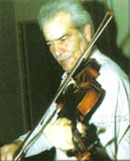
|
Ebrahim Ghanbari-mehr
to
|
|
|
|
|
|
|